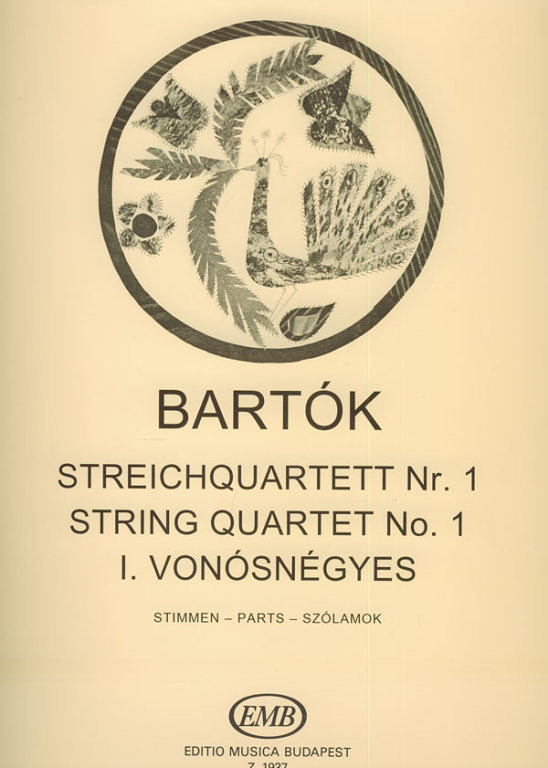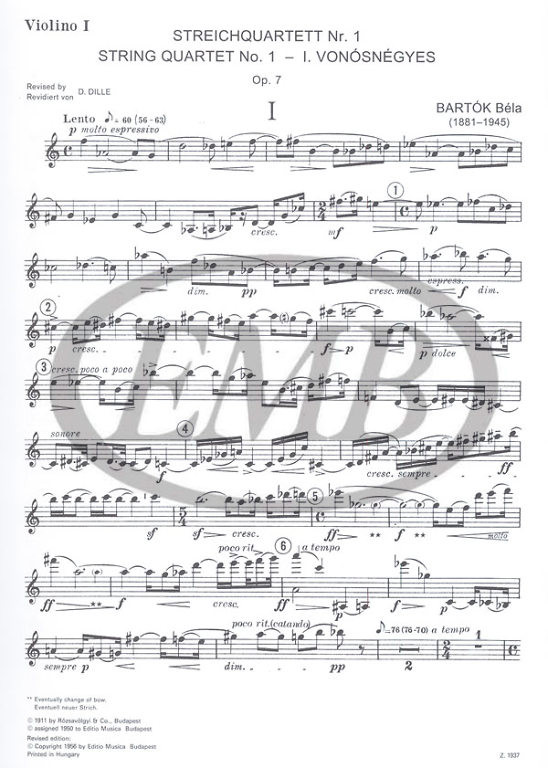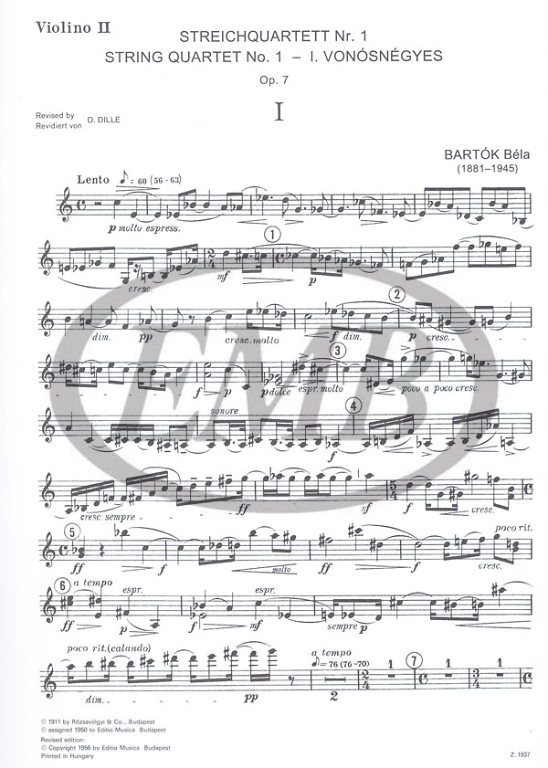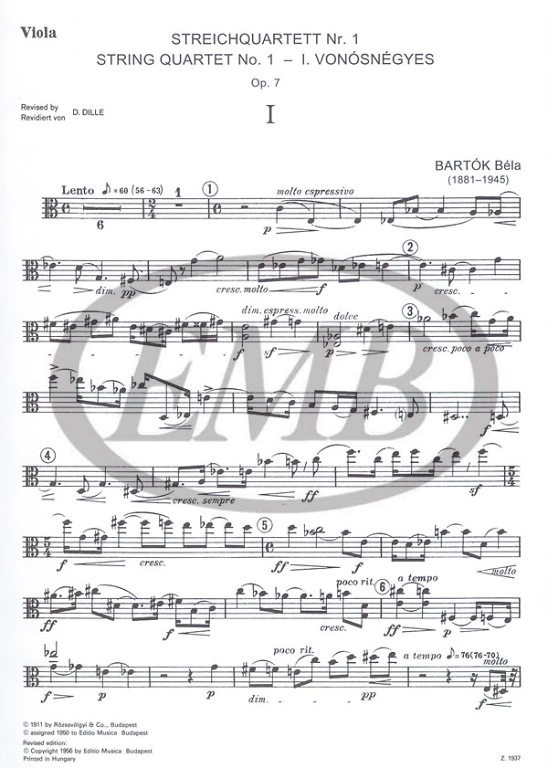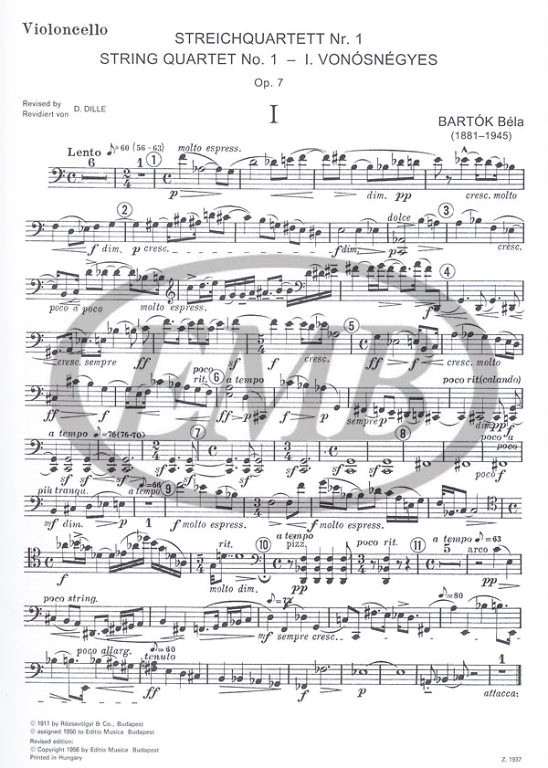Description
Bartók Béla: String Quartet No. 1 / parts / Revised by Dille, Denijs / Editio Musica Budapest Zeneműkiadó / 1955 / Bartók Béla: I. vonósnégyes / szólamok / Átnézte Dille, Denijs
Paperback
Made in Hungary
Setting: String Quartet
Period: 20th Century
Length: 48 pages
Format: Bach (23 x 30,2 cm)
Weight: 0.175 kg
Published: 1955
Publisher: Editio Musica Budapest Zeneműkiadó
Item number: 1937
ISMN: 9790080019375 / 979-0080019375
Hangszer/letét: Vonósnégyes
Korszak: XX. század
Terjedelem: 48 oldal
Formátum: Bach (23 x 30,2 cm)
Súly: 0,175 kg
Első megjelenés: 1955
Kiadó: Editio Musica Budapest Zeneműkiadó
Katalógusszám: 1937
'String quartets accompanied Bartók's creative career from the First, composed in 1908, to the Sixth, completed in 1939 while still in Europe. The First String Quartet was the most significant creation of the newly fledged composer. It is unsurprising then that when composing a work of such scale as the First String Quartet in 1908, Bartók should attenuate the German spirit with French colours. The co-habitation of the two is a characteristically Jugendstil phenomenon, perfectly in keeping with the trends of the age. However, this blending of styles was not a conscious effort on Bartók's part; rather, he was exploring various means of expression. The tonal plan, too, is rather curious: the first movement is in A flat minor, the second in B major, the third in A minor; that is, the closed tonal system typical of Classical form, and which would reappear in Bartók's later works, is in no way present here.'
'A vonósnégyesek végigkísérik Bartók alkotói útját az 1908-ban komponált elsőtől az 1939-ben, még Európában befejezett hatodikig. Az 1. vonósnégyes a zeneszerzői kibontakozás legjelentősebb alkotása.[Bartók] olyan nagyszabású mű komponálása során, mint az 1. vonósnégyes, a német szellemet franciás színekkel próbálta feloldani. A kettő egymás mellett élése jellegzetesen szecessziós jelenség, nagyon jól beleillik a kor törekvéseibe, Bartók esetében azonban ez a stíluskeveredés nem tudatos koncepció, az eszközök keresése vitte erre az útra. A vonósnégyes hangnemi terve is meglehetősen különös: az első tétel [Lento] asz-mollban, a második [Allegretto] H-dúrban, a harmadik [(Introduzione) Allegro - Vivace] pedig a-mollban van, vagyis olyan hangnemi zártságról, ami a klasszikus formákat jellemezte, s ami Bartók későbbi műveiben már ismét megmutatkozik, itt nem beszélhetünk.'
